Introducing Vietnam
Thank you for choosing Ha Long Tour and Service to organize your travel arrangements in Vietnam. This document will give you some more information about the country, the different destinations to visit, useful information for travelers.
Seeing the real Vietnam with us…
Vietnam is an intriguing destination. At the crossroads of tradition and modernity, an eclectic mix of old and new, this country will reveal astonishing finds to every type of traveler. The old world charm is still retained amid the French influenced architectures, wide tree-lined boulevards gracing the cities and former imperial capitals. History buffs can learn about Vietnam's recent hard fought wars in the museums. Culture seekers will delight in the discovery of the diverse landscapes and everyday sights, from bustling floating markets, lush paddy fields to colorful hill tribes in the highlands. For beach lovers, Vietnam's long coastline is framed with sandy beaches and clear seas with lots of opportunities for water-based adventures.
Whatever your interest may be, we assure you that traveling with us to explore Vietnam's hidden treasures will surely be an impressive trip.
Where should I go in Vietnam?
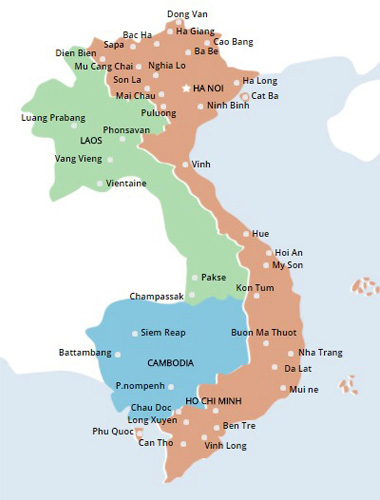
That depends how long you've got, what you want to see and what you want to do. The guide below should help you make those decisions.
If you want to really discover Vietnam, you should set aside a couple of weeks to travel, meet the people and get some kind of understanding for this beautiful and fascinating country. Our shortest tours are half day excursions but the longer you've got the better. At Ha Long Tour and Service we pride ourselves on being able to fill everybody's travel plans with just the right mix. It will be our pleasure to make the suggestion and arrangements to allow you to make the most of your precious leisure time. After all, our team of Vietnamese travel enthusiasts work, live and travel all over the country and we would be happy to share our new discoveries with you.
When to go to Vietnam?
Vietnam's weather varies greatly from north to south with each area marked by slightly different seasons and climates. Because of these regional variations, a part of the country is seasonable at any time of year.
The north, overall, tends to be cooler than the rest of the country. During the winter, from November until February, the day time temperature is pleasantly cool and the weather is often damp. To the far north in places like Sapa, there is occasionally freezing temperatures during this time. The north begins to warm up in March and stays dry and warm until May. From June to October, the north is hot and rainy making it a fairly unpleasant place to travel. Overall the best time to visit the north is from November until April.
Central Vietnam experiences warm weather from July to October and wet, colder weather from November to May. Frequent typhoons hit the central coast from August to October which can cause flooding and disrupt travel plans.
Although the temperature remains fairly steady throughout the year, Southern Vietnam has two seasons. The dry season lasts from December to May, while from May to November is the rainy season. Most of the rain is in the afternoon and only lasts a short time so it is unlikely to disrupt touring plans.
The Chinese new year of Tet is celebrated throughout Vietnam in late January or early February. During this time, transport options fill up quickly and lots of restaurants and tourist sites are closed so it is not recommended to travel to Vietnam then. The following is a guide to the best of the best of Vietnam filled with ideas for travel sightseeing and accommodation with a few insider tips along the way.
Hanoi
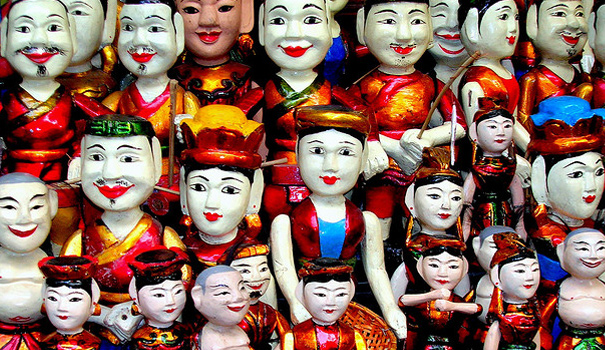 Hanoi is the capital of Vietnam. It is one of the two entry points to the country. The first impression you may have is of a chaotic city. But the longer you stay, the more you will appreciate Hanoi. You will need around seven days to fully explore Hanoi. Most tourists do not stay for so long here. They stay a couple of days, visit the Old Quarters, and then go to Ha Long Bay or Sapa. If you can, stay longer and explore the city and its lakes. If you want to do a tour of Vietnam, your next stop should be Hue. You can get there by plane, train or private car.
Hanoi is the capital of Vietnam. It is one of the two entry points to the country. The first impression you may have is of a chaotic city. But the longer you stay, the more you will appreciate Hanoi. You will need around seven days to fully explore Hanoi. Most tourists do not stay for so long here. They stay a couple of days, visit the Old Quarters, and then go to Ha Long Bay or Sapa. If you can, stay longer and explore the city and its lakes. If you want to do a tour of Vietnam, your next stop should be Hue. You can get there by plane, train or private car.Ha Long Bay is a UNESCO World Heritage site with thousands of islands. A two or
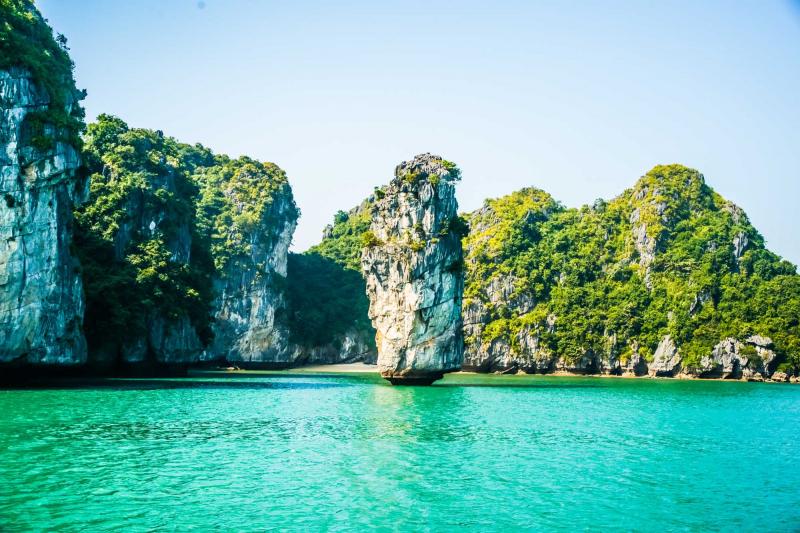 three-day tour should be enough to visit Ha Long Bay. In summer, its air is clearer and water bluer, but it can be visited in any season. You get there by van from Hanoi. The drive takes approximately four hours and passes through the rich farmlands of the Red River Delta.
three-day tour should be enough to visit Ha Long Bay. In summer, its air is clearer and water bluer, but it can be visited in any season. You get there by van from Hanoi. The drive takes approximately four hours and passes through the rich farmlands of the Red River Delta.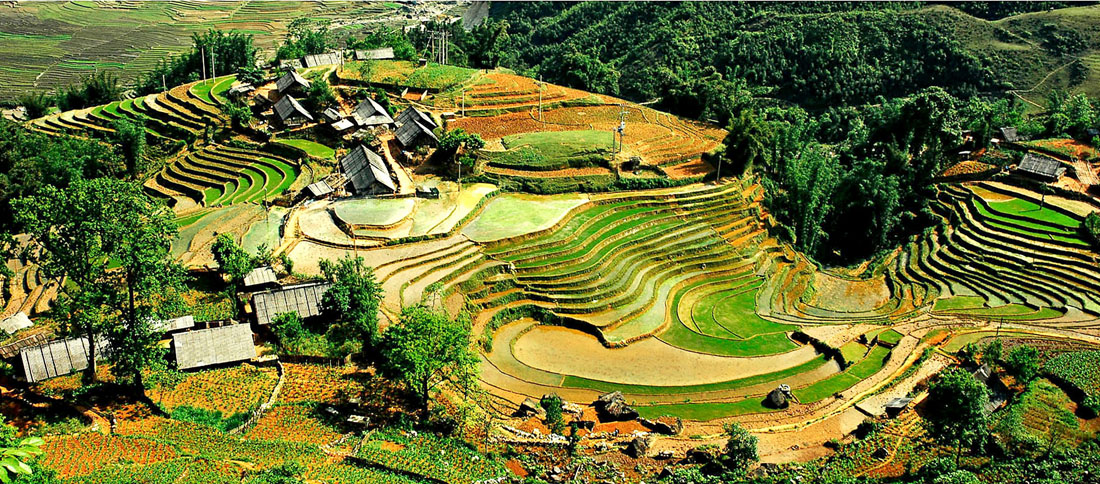
Sapa is the name of a town in the Northwest of Vietnam. Many trekkings and excursions are available, along with the traditional ethnic minorities who inhabit this mountainous region. How long you stay in Sapa depends on the number of excursions you want to do. Most trekkings last from two to five days. Go on a weekend to enjoy its markets. You can get to Sapa by an overnight train from Hanoi. Winters can be quite cold.
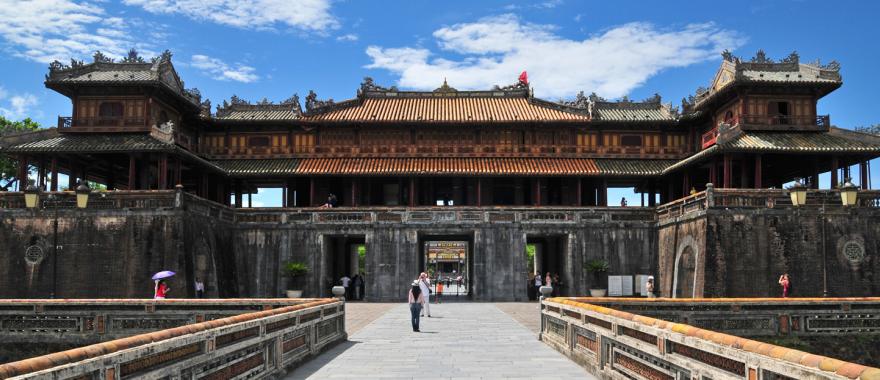 Hue 410 miles (660 km) south of Hanoi is the ancient capital of Vietnam. it is best known for its historic monuments and architecture and has been appointed as a UNESCO World Heritage Site. You will need two days to explore this city. Add another day to visit the must-see temples surrounding the city. If you are traveling South, your next stop should be Hoi An. You get there by private car. If you are traveling North, your next stop is Hanoi.
Hue 410 miles (660 km) south of Hanoi is the ancient capital of Vietnam. it is best known for its historic monuments and architecture and has been appointed as a UNESCO World Heritage Site. You will need two days to explore this city. Add another day to visit the must-see temples surrounding the city. If you are traveling South, your next stop should be Hoi An. You get there by private car. If you are traveling North, your next stop is Hanoi.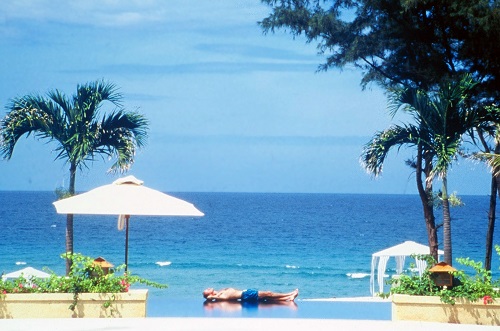
Da Nang is Vietnam's third largest city and the gateway to a fascinating coastal region, accessible an hour's flight from Saigon or Hanoi, as well as from international destinations such as Hong Kong and Singapore. More than just a beautiful beach destination, it is a wonderful compliment to Vietnam's vibrant cities, as well as a fabulous standalone event destination in its own right.
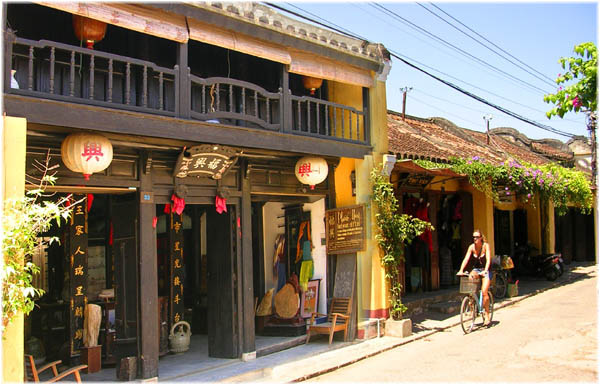 Hoi An is another must see (30 km from Da Nang). Dedicate a few days to visit its picturesque streets. This is also the place to buy tailored clothes. There is also a nice beach, if you are planning to stay longer. If you are traveling North, your next stop is Hue. If you are traveling South, your next stop can be Nha Trang, Mui Ne or Saigon. To get to any of these destinations you should take the train, private car or a plane (from Da Nang).
Hoi An is another must see (30 km from Da Nang). Dedicate a few days to visit its picturesque streets. This is also the place to buy tailored clothes. There is also a nice beach, if you are planning to stay longer. If you are traveling North, your next stop is Hue. If you are traveling South, your next stop can be Nha Trang, Mui Ne or Saigon. To get to any of these destinations you should take the train, private car or a plane (from Da Nang).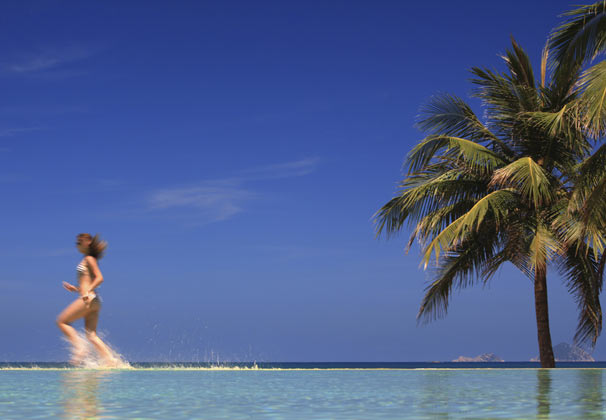 Nha Trang is a big town with nice beaches. A great place to relax and to go snorkeling. If traveling North, your next stop should be Hoi An. If traveling South, you can go straight to Saigon, or stop in Mui Ne. You can get there by plane, train or private car.
Nha Trang is a big town with nice beaches. A great place to relax and to go snorkeling. If traveling North, your next stop should be Hoi An. If traveling South, you can go straight to Saigon, or stop in Mui Ne. You can get there by plane, train or private car.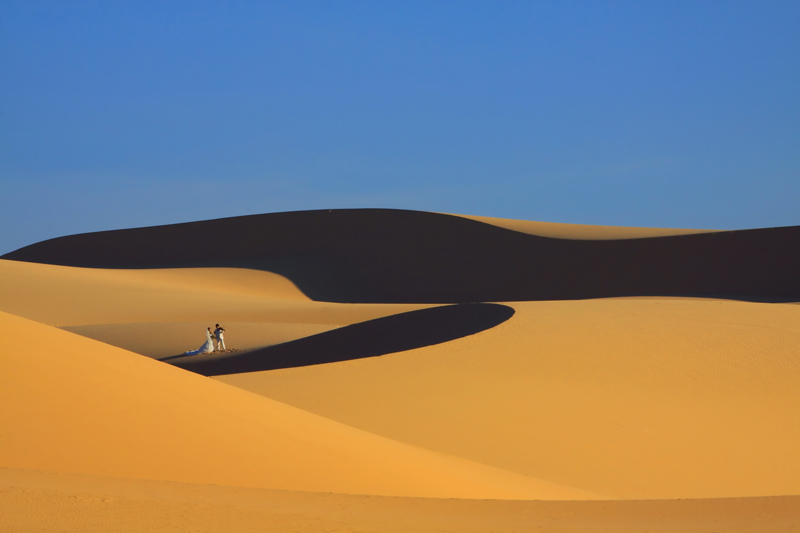
Mui Ne is another nice beach destination. You can relax on the beach. From here you should go to Saigon, if traveling south.
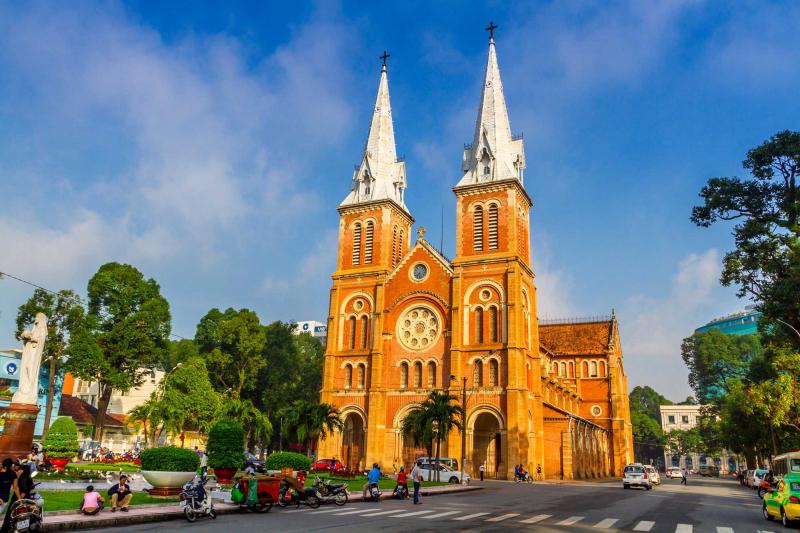 Saigon or Ho Chi Minh is the business city in Vietnam. It is noisier and more chaotic than Hanoi. From here you can do an excursion to the Mekong Delta, Cu Chi tunnels. Finish your trip here if you are traveling North to South or you can extend some days to travel to Mui Ne (Phan Thiet), Phu Quoc Island or Siem Reap (Cambodia).
Saigon or Ho Chi Minh is the business city in Vietnam. It is noisier and more chaotic than Hanoi. From here you can do an excursion to the Mekong Delta, Cu Chi tunnels. Finish your trip here if you are traveling North to South or you can extend some days to travel to Mui Ne (Phan Thiet), Phu Quoc Island or Siem Reap (Cambodia).Mekong Delta is another 'must see' destination in any travel to Vietnam. Do not miss its floating markets. You get here by private car from Saigon.
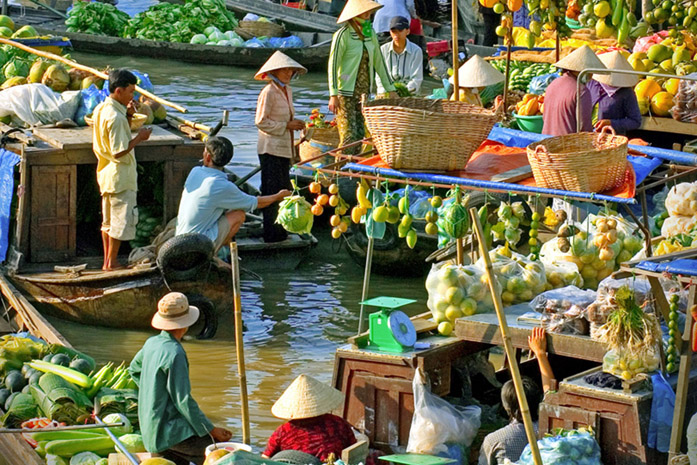
Cai Rang floating market
Located in Cai Rang District, Can Tho City, it is one of the famous river markets in the southwestern region. Although the present road traffic system has developed, the floating market still exists and gets busier. The market often opens from dawn to 8 or 9 am. The market usually sells fruits, agricultural and forest products of the region. To show what kind of goods are being sold, sellers often plant a pole on top of their boat with a sample of their goods. This cultural characteristic is only seen in the Mekong River Delta.
 Phu Quoc is Vietnam’s largest island covering over 593 km2. Officially part of Kien Giang province, it is known as the “shining pearl” of the Gulf of Thailand. The island's clear waters, isolated beaches, forested interior and charming local character make for an ideal beach escape. Do not forget to sample Phu Quoc's famous traditional products - fish sauce and black pepper. For a relaxing tropical beach retreat, try La Veranda Resort & Spa or ChenSea Resort & Spa. The best time to go is during mid-winter.
Phu Quoc is Vietnam’s largest island covering over 593 km2. Officially part of Kien Giang province, it is known as the “shining pearl” of the Gulf of Thailand. The island's clear waters, isolated beaches, forested interior and charming local character make for an ideal beach escape. Do not forget to sample Phu Quoc's famous traditional products - fish sauce and black pepper. For a relaxing tropical beach retreat, try La Veranda Resort & Spa or ChenSea Resort & Spa. The best time to go is during mid-winter.Vietnam is not just all about cities and beaches, it also possesses some spectacular mountain ranges. In fact, the vast mountainous area in Northern Vietnam takes up a third of the country’s total land area. Here you can explore the authentic culture of various ethnic groups while staying away from the crowds or go on exciting adventures while gazing at superb rugged mountains. Choices are plenty, but here’s our list of the top 6 mountain destinations to visit in Northern Vietnam.
1. Ha Giang
The northernmost province of Vietnam is also one of the poorest and most secluded in Vietnam. With that being said, Ha Giang offers some of the best mountainous views in Southeast Asia, especially when you weave your way through the imposing Ma Pi Leng Pass, the King of Passes in Vietnam. At 1.500m, the twisty road here lies right on the steep limestone mountain, with the Nho Que River looming far beneath. Truly breathtaking!
2. Ba Be
The massive Ba Be National Park is 240 kilometers to the northeast of Hanoi and covers as much as 23,000 hectares of valleys, caves, rivers, waterfalls, three enormous lakes (Ba Be means “three basins”) and of course evergreen tropical forests. To some Vietnamese, Ba Be is regarded as the “green lungs” of Northeast Vietnam. And if you’re looking for a mountain destination which provides many different kinds of outdoor activities, you’re coming to the right place. Here you will be offered three different treks with different levels of difficulty. Your efforts will be well rewarded by the pristine natural settings and the friendliness of the Tay people who is living here. With the extensive network of waterways, Ba Be is also a great destination for kayaking enthusiasts. Similar to Mai Chau, the main overnight stay of choice here is local homestays.
3. Cao Bang
Cao Bang has the most astonishing waterfalls in Vietnam, Ban Gioc Waterfall. This amazing site straddles between Vietnam-China borders and has a terrific 30 meter vertical drop, spanning over 200 meters. This is also the world’s fourth largest waterfall that lies along the national border.
4. Mu Cang Chai (Yen Bai Province)
About some 300 km Northwest of Hanoi, Mu Cang Chai is one of the most amazing landscapes of rice-terraced fields in Vietnam. Located about 1000 meters above sea level, Mu Cang Chai has a special topography with steep hills and deep valleys where the local residences such as Hmong, Thai, Dao have created the master-piece, Terraced Fields. They has cultivated about 500 hectares of rice terraces for centuries in La Pan Tan, Che Cu Nha and De Xu Phinh communes. In 2007, the fields was recognized as national heritage sites for its amazing landscape. The fields look stunning during the rice season. The best times are the planting season (June) and the harvesting season (The end of September to the beginning of October). During harvesting season, ready crop is turning to yellow, while new crop is dotted with white of water and young green of seedling rice. The scenery is a big attraction to photographers and trekkers.
5. Mai Chau (Hoa Binh Province)
The sleepy town of Mai Chau lies within a valley, 140 kilometers to the west of Hanoi. Mai Chau is not as stunning as in Ha Giang, but it provides some idyllic rural view that will ease your senses. In day, you will take on some easy trekking or biking routes through mountain paths, rice fields, waterfalls, and streams, then visit some hill tribes and markets. After the night falls, you will have the chance to try a local dinner placed on a banana leaf. Then, take part in the traditional dance with your fellow travelers and the locals before taking some sleep in a rustic stilt house. The best time to visit Mai Chau is from October to April, when the weather is neither too hot nor too cold.
6. Pu Luong (Thanh Hoa)
Pu Luong Region stretches all the way from Mai Châu to Cuc Puong National Park. The region is quite unknown among most tourists, but that does not make it less worth to visit. Pu Luong may attract you thanks to its stunning rice terrace fields, beautiful nature, breath taking mountain passes and traditional villages of ethnic minorities who still retain their unique cultural heritage and way of living. Pu Luong Nature Reserve is located roughly 180 South West of Hanoi. The reserve has a total area of 17,662 ha and ¾ of the nature reserve is primary tropical forest. At the same time this is the living place of ethnic Muong and Thai people. In Thai language Pu Luong means: the highest peak of the village. Pu Luong offers many opportunities for tourists, such as trekking in the forest and along the rice terrace fields, cycling through the reserve and visiting many authentic small villages. It is a real “off the beaten track” destination.
As mentioned before, Pu Luong Region is unknown among most tourists, but Pu Luong has all the highlights of Northern Vietnam in one place! Pu Luong is a “microcosm” of Northern Vietnam. Containing Sapa’s magnificent mountain ranges, Mu Cang Chai’s stunning rice terrace fields, Cao Bang’s scenic rivers and waterfalls, Ha Giang’s breathtaking mountain passes and Mai Chau’s authentic villages of ethnic minorities. Do you want to stay in a total peaceful place, away from the mass, with outstanding beauty and bio diversity along with villages of ethnic minorities? Come to Pu Luong Nature Reserve and be amazed!
AIRLINES
Domestic: 3 domestic airlines are currently operating in Vietnam: Vietnam Airlines, Jetstar-Pacific Airlines and Viet Jet Air. The last 2 are low-cost carriers (LCC). All airlines are using a mixture of Boeing and Airbus planes and Vietnamese as well as foreign pilots. We uses Vietnam Airlines as first choice.
AIRPORT TAX
There is a departure tax on all international flights from Hanoi and Ho Chi Minh City but this tax is already included in the price of your all airplane tickets.
ARRIVAL IN VIETNAM
BY AIR
Consult your local travel agent for routings, fares and availability on flights to Vietnam. Discount websites and flight search engines may offer some good deals. Major airlines flying to Ho Chi Minh City or Hanoi include: Vietnam Airlines, Air France, United Airlines, Lufthansa, Thai Airways, Qatar Airways, Singapore Airlines, Malaysian Airlines, China Air, Hong Kong Air, Cebu Pacific, Emirates, Etihad and many more. Major airlines flying to Danang International Airport include Silk Air, Air Asia and Dragon Air. Nha Trang’s Cam Ranh Airport and Phu Quoc are now International airports used for some long-haul charter flights.
BY LAND
Vietnam shares a border with China in the north (three border crossings), Laos in the west (five border crossings) and Cambodia in the south-west (three border crossings).
From China:
There is a road crossing known as Huu Nghi in Lang Son province. Transport coming from Kunming cross the border at Lao Cai, in northern Vietnam. From Guangzhou, you will cross the border at Mong Cai, a few hours drive from Halong and its spectacular Bay.
From Laos:
South: Via Savannakhet and Sepon (Laos) to Lao Bao (Vietnam) and central provinces
Central: Vientiane to Lak Sao (Laos) to Cau Treo (Vietnam) and the Ha Tinh Province
Central: Xieng Khuang or Phonsavan to Nam Can (Vietnam) and the Nghe An Province
North: Xam Neua Province (Laos) to Na Meo (Vietnam) and the Thanh Hoa Province
North: Muang Khua Province (Laos) to Tay Trang border (Vietnam) and Dien Bien Phu
From Cambodia: If you travel from Phnom Penh by speedboat, you will enter Vietnam at Chau Doc, in the Mekong Delta area. If you arrive from Cambodia by road into Ho Chi Minh City, you will enter Vietnam at Moc Bai, which connects Vietnam’s Tay Ninh Province with Cambodia’s Svay Rieng Province. Border crossings at Prek Chak/Xaxia (close to Kep in Cambodia and Ha Tien in Vietnam) are now possible.
NOTE: You cannot obtain a visa on arrival at land border-crossing points. If you enter Vietnam by land, you must obtain the visa before arrival. Refer to our VISA section below for more information.
ARRIVAL FORMALITIES/VISA ON ARRIVAL
In case you are obtaining your pre-arranged visa on arrival please proceed to the Visa counter and read the visa section below.
ATMs
ATMs for withdrawing Vietnamese Dong are available in major airports, hotels, towns and capitals of provinces throughout Vietnam. Most ATMs have an English language version. Ask your tour guide for help when you need to locate an ATM.
CLOTHING
Comfortable lightweight clothing in natural fabrics such as cotton is most suitable for travelling in Vietnam. The dress code is fairly casual as in most parts of the tropics but it is advisable to cover arms and legs in the evenings against biting insects. A lightweight raincoat and umbrella are a good idea in the rainy season and an umbrella can also offer useful shade from the sun.
Evenings in the north and the center can be quite chilly so bring a sweater and a good jacket especially from November to February. Visitors should not wear shorts, short skirts or other revealing clothing when visiting pagodas and monasteries. Shoes must be removed before entering some religious building or a private home. It is therefore useful to wear shoes without too many laces and which can easily be taken off.
CREDIT CARDS
Most credit cards are accepted in Vietnam. VISA and MASTERCARD are the most widely accepted. JCB and AMERICAN EXPRESS are also accepted in some outlets. Not all hotels, commercial centers, shops and restaurants accept credit cards. Check with the cashier before making any purchases.
Bear in mind that in some places a surcharge usually applies for credit card purchases: VISA, MasterCard and JCB approx 3%, American Express: 4% surcharge.
NOTE: Surcharges can change without prior notice. Check the percentage charged before you pay.
ELECTRICITY
Vietnam mainly uses 220V but in some areas, 110V is also used. A mixture of flat and round 2-pin outlets are used throughout the country. It is recommended to bring a universal plug adaptor.
ENTERTAINMENT
There are plenty of entertainment options in Vietnam and restaurants/bars and nightclubs open until late at night/early in the morning. A wide variety of restaurants are on offer with everything from Vietnamese, Asian, Italian, French cuisine, etc. to fast food.
FOOD
The cuisine of Vietnam comes as a pleasant surprise to many visitors and is definitely a part of the Vietnam experience not to be missed. One of the characteristics of Vietnamese food is that it is always fresh being bought the same morning straight from the market. Food is usually prepared with a minimum of oil and served with the ubiquitous fish sauce called “nuoc mam”. Typical Vietnamese dishes you can expect to try include pho, a type of rice noodle soup eaten for breakfast, cha gio (nem in northern dialect), deep-fried spring rolls and goi ngo sen, a delicious salad made with lotus stems, shrimps and peanuts. Due to the strong Buddhist influence in Vietnam, vegetarian food is widely available however more so in Southern Vietnam.
HEALTH
No vaccinations are mandatory except for yellow fever if you are coming from an area where the disease is present. However visitors should be inoculated against typhoid, cholera, hepatitis A & B, tetanus and polio. Malaria is present in most of the region and it is advisable to take precautions, especially if traveling off the beaten track. Medical facilities are limited and it is essential to take out a good medical insurance policy before traveling in case evacuation is needed.
Consult your doctor for up-to-date information and prescriptions for vaccinations, anti-malarial tablets and any reasonably foreseeable illnesses whilst traveling in Vietnam. Some vaccination courses may need time to be completed. If you plan to take anti-malarial tablets, you usually need to start one week before arrival. We recommend that you carry a first aid kit as well as any personal medical requirements (including a spare pair of glasses).
HOURS OF BUSINESS
Offices are usually open from Monday to Friday from 07:30 or 08:00 until 17:00 or 18:00 and often close for lunch between 12:00 and 13:30. Some offices also open Saturday morning. Shops open early and close any time between 18:00 and 22:00. Most shops are open 7 days a week.
INTERNET
Major hotels have Business Centers with PCs connected to the Internet. Some of them have wireless broadband access in rooms or public areas. Cybercafés are available everywhere and are easily found in major towns and cities. Prices are reasonable, usually below US$1 per hour. Most Internet cafés are equipped with webcams, headsets and microphones. Vietnam has an exceptional amount of cafés and restaurants offering free WIFI connections, if having a meal or a drink internet fees are waived.
LANGUAGE
The national language of Vietnam is Vietnamese. In big cities and in places with many tourists, people will speak basic English. The younger generation will be more adept at speaking English, while the older generation still speaks some French. Because Vietnamese has six different tones, it is a difficult language for most foreigners to speak despite the fact that the Roman alphabet is used in modern Vietnamese. The same word can have six different meanings depending on the tone used to pronounce it. Russian and Chinese are also spoken by some people.
MONEY
The currency in Vietnam is the Vietnamese Dong (VND). US Dollars and Euros are accepted in some hotels, restaurants and shops. Please note that they are not normally allowed to collect foreign currency since 2012. Banks are open Monday to Friday from 08:00 to 05:00 and some on Saturday morning. In the major cities there are some exchange offices open long hours near places frequented by tourists and most hotels will change US Dollars and Euros at very reasonable rates.
Current exchange rate (May 2017) 1 USD = 22,500 VND. 1 Euro = 25,100 VND
You receive a slightly better exchange rate for $100 and $50 notes than for smaller denominations.
Vietnamese Dongs come in the following forms:
Bank notes: 200; 500; 1,000; 2,000; 5,000; 10,000; 20.000; 50,000; 100,000; 200,000; 500,000
Coins: 200; 500 (silver) and 1,000; 2,000; 5,000 (gold)
PHOTOGRAPHY
Normal print films are available in Vietnam as well as professional quality films (like slide films). Digital photos can easily be downloaded and loaded onto a CD-Rom in case you run out of memory.
RELIGION
Buddhism is the dominant religion in Vietnam usually combined with elements of Confucianism and Taoism. About 10% of the country's population is Catholic and there are also communities of Protestants and Muslims. Vietnam is also home to a unique religion called Cao Dai, a religious cocktail of all the world's major faiths.
SAFETY
Vietnam is a safe country to visit. As a global rule, never leave your valuables unattended in the vehicles and always maintain eye contact and a firm grip on cameras and shoulder bags. In Saigon (HCMC) there has been a surge in drive-by snatching so keep a lookout around you and never stay close to the road’s edge with a bag, gold chains or handling a phone or camera as these are the favorite objects.
Avoid cyclos late at night and choose reliable metered taxi companies (they are really cheap and air-conditioned). Choose Mai Linh Taxi, Vinasun, Vina Taxi in Saigon (HCMC) and Hanoi Taxi and CP Taxi in Hanoi. Best to avoid other brands on the street.
SHOPPING
Souvenirs to look out for in Vietnam include lacquerware, silk, conical hats, woodcarvings, hill tribe fabrics and handicrafts, embroidery, marble, ceramics, silver jewelry, antique watches and paintings. Ho Chi Minh City and Hanoi have the best choice when it comes to shopping but Hoi An in the center of Vietnam is also a very good place to hunt for bargains.
TELEPHONE
If you have worldwide coverage, you can bring your own mobile phone and use it to make domestic or international calls. Check with your mobile phone provider for the costs before using it abroad - it may be expensive. Most hotels now have IDD phones in rooms and it is possible to send faxes from hotels and post offices although these services are expensive. It may not always be possible to make international calls in remote areas.
TIME
Vietnam is GMT + 7 and does not operate daylight-saving system.
TIPPING
Tipping for good service is not expected but is always appreciated in a country where the average annual income is quite low compared to Europe for example. It is customary to tip tour guides and drivers at the end of a tour. Hotel and station porters should also be tipped. Do not let guide talk you into tipping more than you plan to. It is totally up to you who you tip, when and how much.
TRANSPORTATION
Vietnamese law does not allow foreigners to rent and drive a car. Traffic and roads conditions may be very different to what you are used to.
VISAS
Most visitors to Vietnam require a visa to enter the country and all travelers must have a passport valid for 6 months after their planned exit from Vietnam.
Exceptions: Nationals from Norway, Sweden, Denmark, Finland and Russia traveling to Vietnam and staying for 15 days or less do not need to apply for entry visas, provided that their passport is valid for at least six months and they can show their return ticket. Those who wish to stay longer than 15 days will need to apply for a visa.
Tourists holding ASEAN passports do not need a visa for a visit up to 30 days. Philippines passport holders do not need a visa for a visit up to 21 days. Japanese and South Korean passport holders do not need a visa for a visit up to 15 days.
A tourist visa is normally a single entry visa, which means that if you exit Vietnam (for example for a side trip to Cambodia), you will require a new visa to re-enter (or apply for a Multiple Entry Visa)
The validity of a Tourist Visa is 30 days and normally a single entry visa is given unless a multiple entry is requested.
There are 2 ways to obtain a visa:
Case 1: Visa application in your country before departure
In case there is a Vietnamese Embassy or Consulate in your home town.
Apply directly at the Vietnamese embassy or consulate. The length of the process can vary.
Note: A visa requested as a multi-entry at embassies abroad is often issued as a single entry; it is recommended to double-check your visa stamp in passport when collecting your passport. Multiple entry visas can also be arranged on arrival (Case 2).
Case 2: Pre-arranged “Visa on arrival” at International entry points
In case there is NO Vietnamese embassy or consulate in your home town, send us all passport details as required below and we will process a pre-approval here from Vietnam. Print out and bring the “Visa pick-up upon arrival approval letter” (see below) to the airline check-in counter when you depart. Without this letter airlines will refuse you boarding.
On arrival in Vietnam, proceed to the Visa on Arrival counter at the airports. You will be asked to fill one more form, give 2 photos and pay USD 25/person (Single entry), USD 50/person (Multiple entry until 85 days) in cash before the visa is stamped into your passport and before going through passport control.
Such a procedure is possible at the international airports in Hanoi, Ho Chi Minh City (Saigon) and Da Nang. Before departure, prepare some bank notes in US Dollars to pay the visa stamping fee on arrival.
For both cases mentioned above we can facilitate the visa application procedure and obtain the necessary visa pre-approval from the Vietnamese Immigration Department in advance. We need the following details from all applicants:
- Full name as it appears in your passport
- Date of birth DD/MM/YY
- Gender
- Passport number
- Issue date and expiry date of your passport
- Place of issue (e.g. Paris, France)
We will send you in time the official document issued by the Vietnamese Immigration department. The approval process usually takes 5 working days. A processing fee is charged for this service. In urgent cases (less than 5 days) an express surcharge will be charged.
NOTE: All the above information may change without prior notice. It remains the traveler’s responsibility to verify whether or not you are subject to a tourist visa for Vietnam.
WEATHER
Hanoi and the north of Vietnam have distinct winter and summer seasons. The mainly dry winter lasts from December to March with average temperatures of 18-20°C but it can drop to as low 10’s at times. Summer lasts from May to October and is hot and humid with temperatures around 30°C. Hue and Danang, in the center of the country, have very hot, dry weather from February to August with temperatures reaching the mid 30's Celsius, but can experience some heavy rainfall between September and January. Ho Chi Minh City and the south have a hot, dry season from December till April with average temperatures around 28°C and a warm rainy season from May to November. In the rainy season, most rain comes in short, heavy bursts.
There is good weather somewhere in Vietnam all year round! Vietnam stretches over 2000 km from North to South. The climate differs all year round from one region to another. The North can be chilly during winter months (December to March). North and Central Vietnam can encounter tropical storms and typhoons from October to January. Overall, the north of Vietnam experiences more marked seasons than the rest of the country with two distinct seasons: wet and dry.
The South, including Ho Chi Minh City and the Mekong Delta, benefits from sunshine and warm weather all year round. However, the rainy season lasts from May to November (with showers once or twice a day in general) and a dry season from December to April. The Central Highlands can be chilly. Nha Trang has warm – sometimes hot - weather all year round, with a rainy season from the end of September until December.
Unless you intend to visit friends, relatives or your family, we do not recommend visiting Vietnam during the Lunar New Year, Tet holidays (Vietnamese New Year falls between late January and February). The Tet holiday is the most important period of the year for Vietnamese people who take time off to visit their families in the countryside. All hotels, buses, trains and flights are full, and there is almost no activity in the markets and shops. Some hotels and restaurants are under-staffed and in some cases the quality of the service may suffer. This period of reduced activity may last from a week before and a week after the Tet period. It is also impossible to get a “visa authorization letter” processed during this period.
NOTE: As a reminder, the peak season lasts from October to May. To avoid disappointment because hotel rooms or domestic flights are fully booked, reserve your travel arrangements early. Contact us to discuss your travel plans.
WATER
It is not advisable to drink tap water but bottled mineral water is safe and available everywhere. All hotels provide a complimentary bottle of local mineral water per person in the room. Ice cubes in drinks is generally OK in good standard hotels and restaurants but it is best to avoid it on street stalls or in country areas. Some minor stomach problems are always possible when travelling in exotic countries. Bring a supply of your usual anti-diarrhoea medicine.


